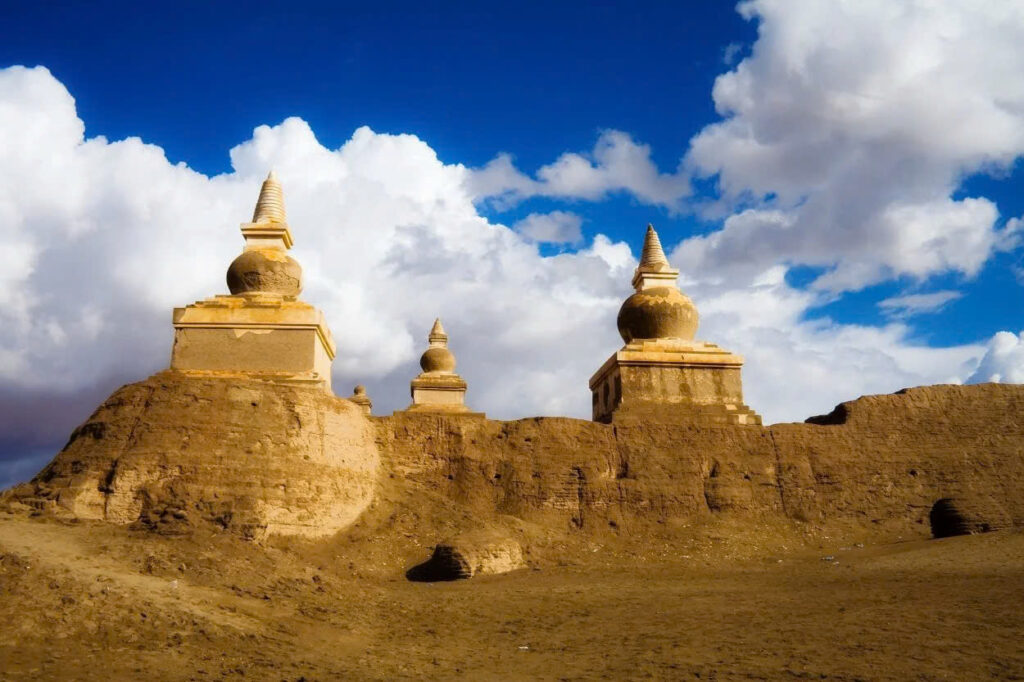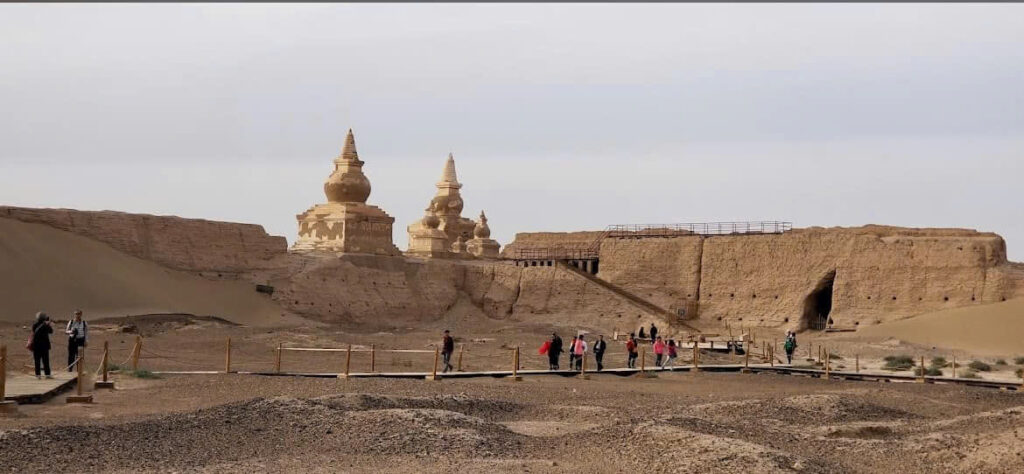Nestled in the heart of western Inner Mongolia lies a haunting testament to ancient grandeur – Khara Khoto, the “Black City.” This remarkable settlement, whose very name evokes mystery in the Mongolian tongue, tells a compelling tale of rise, prosperity, and ultimate abandonment along the legendary Silk Road.
The Rise of a Desert Oasis

During the Tang Dynasty (618-907 AD), a visionary settlement emerged near the life-giving waters of the Ejin River. Khara Khoto’s founders chose their location wisely – this strategic position would soon transform a desert outpost into a bustling metropolis under the Western Xia Dynasty (1038-1227 AD).
A Marvel of Ancient Engineering

The city’s most striking feature was its formidable walls, soaring up to 10 meters into the desert sky. Within this protective embrace lay a sophisticated urban landscape where temples reached toward heaven, administrators managed daily affairs, and countless families made their homes. The crowning glory was a magnificent Buddhist stupa, its shadow falling across streets where merchants from distant lands haggled over precious goods.
A Melting Pot of Cultures
What made Khara Khoto truly extraordinary was its role as a cultural crossroads. The city’s architecture told this story eloquently, weaving together influences from Tang Chinese, Tibetan, and Mongolian traditions. This wasn’t merely a trading post – it was a living gallery of Asian civilization’s finest achievements.
The Mongol Era and Decline

The early 13th century brought dramatic change as Genghis Khan’s armies swept through the region. Yet rather than spelling doom, Mongol rule initially brought a new era of prosperity to Khara Khoto. The city flourished within the vast peace of the Mongol Empire, continuing its role as a vital trade hub.
Video
The Mystery of Abandonment
By the late 14th century, however, the bustling streets of Khara Khoto fell silent. The exact cause remains debated – some historians point to fierce battles during the Yuan Dynasty’s collapse, while others suggest nature itself turned against the city as the crucial Ejin River began to dry.
Rediscovery and Hidden Treasures

The story might have ended there, buried in desert sands, if not for Russian explorer Pyotr Kozlov’s early 20th-century expedition. What he uncovered was astonishing – a treasure trove of perfectly preserved artifacts, manuscripts in multiple languages, and Buddhist artworks that opened a window into the past.
A Legacy Written in Sand

Today, Khara Khoto stands as both monument and mystery. Its weathered walls continue to guard secrets, while its archaeological treasures provide invaluable insights into life along the Silk Road. Protected as a cultural heritage site, the Black City draws visitors from around the world, each seeking to touch a piece of history that refuses to be forgotten.
More than ruins, Khara Khoto represents humanity’s enduring ability to create beauty and civilization in the most challenging environments. As research continues, this ancient city reminds us that even in our most remote corners, culture, commerce, and community can flourish together in remarkable ways.

